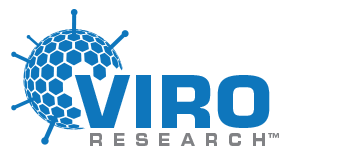INTRODUCTION:
Oral fluids have been used to detect Herpes virus antibodies, including secretory IgA, IgM, and IgG. Herpes virus particles have also been identified in saliva. Several Herpes viruses, such as Epstein–Barr virus (EBV), varicella-zoster virus (VZV), and herpes-simplex-1 (HSV-1), have even been detected in the saliva of Astronauts from shuttle-flights and ISS missions1Cohrs, R. J., Mehta, S. K., Schmid, D. S., Gilden, D. H., & Pierson, D. L. (2008). Asymptomatic reactivation and shed of infectious varicella zoster virus in astronauts. Journal of Medical Virology, 80(6), 1116–1122. https://doi.org/10.1002/jmv.21173 2Rooney, B. V., Crucian, B. E., Pierson, D. L., Laundenslager, M. L., & Mehta, S. K. (2019). Herpes virus reactivation in astronauts during spaceflight and its application on earth. Frontiers in Microbiology. 10, 16. https://doi.org/10.3389/fmicb.2019.00016. The ease of sample collection, along with the cost-effective use of lateral flow assays for detection, opens a wide range of opportunities for easily detecting Herpes viruses in point-of-care settings.
DISCUSSION:
A recent review by Miočević et al.3Miočević, O., Cole, C. R., Laughlin, M. J., Buck, R. L., Slowey, P. D., & Shirtcliff, E. A. (2017). Quantitative lateral flow assays for salivary biomarker assessment: A review. Frontiers in Public Health, 5, 133. https://doi.org/10.3389/fpubh.2017.00133 discusses the strengths and weaknesses of using lateral flow assays (LFAs) for detecting viruses in saliva. The collection of saliva allows for a repeated collection, if needed, without the stress of drawing blood. Even with the advent of LFAs for diagnostic assays in recent years, there are relatively few such assays for viral detection in saliva. LFAs can work either as an immunoassay (LFIA) to detect viral-specific antibodies in the collected sample or to directly detect the virus particle present in the sample. The assay works based on liquid movement (containing the analyte to be detected) across a strip of polymeric material containing dry reagents that activate by the lateral movement of a liquid sample up the strip membrane. The specific detection area on the strip can contain either (1) viral-specific recombinant proteins, to which the viral antibodies in the saliva will recognize by binding to the recombinant viral protein; or (2) viral-specific antibodies on the test strip, to which the virus particle in the saliva will be recognized and bound. Despite the simplicity of this assay description, extensive development of these assays is required by the manufacturer to overcome assay limitations, such as lower analyte concentrations in the sample. Developers are utilizing various approaches such as using colloidal gold or carbon, fluorescent or luminescent materials, or colored latex beads. As an example, colloidal nanoparticles generate direct signals, whereas the use of other materials may require additional steps to derive analytical results, such as upconverting phosphor technology (UPT). UPT is based on sub-micron sized ceramic particles coated with lanthanides that absorb infrared light (excitation) and emit visible light (response signal). The particles functionalize with antibodies and antigens for use as labels on a lateral flow strip. There can be many steps in the assay development to consider including, sample composition and how the sample will flow along the strip, as well as the concentration of the analyte to be detected in the sample. Manufacturers must ensure that only the molecules of interest bind to the antigens or antibodies coated on the test strip.
CONCLUSION:
The use of lateral flow assays for detecting virus particles or virus-specific antibodies is a promising approach when applied to saliva-based assays. There are many advantages to both of these sample collection and detection assays. Although there are several commercial assays to detect Herpes viral nucleic acid in saliva, at present, there are few if any such assays available for detecting Herpes virus analytes (antibodies or virions) in saliva using an LFA.
By David Kilpatrick, PhD and Abbas Vafai, PhD
MKTG 1046 Rev A



